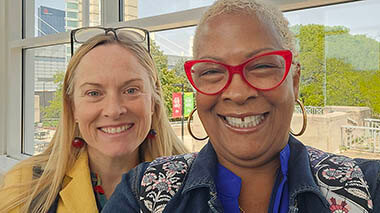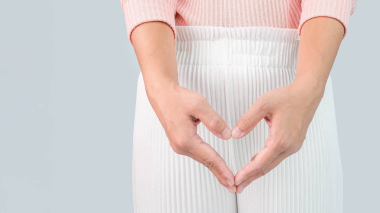At about the same time you begin looking for reading glasses to see the menu at your favorite restaurant, it occurs to you that you may be creeping up on the life stage referred to as “middle aged.”
If you prefer to believe 60 is the new 40 – and why shouldn’t you? – then you’re not hung up on the labels of aging. But the reality for women in their mid-40s and beyond is this: there are health and wellness issues best met eyes wide open. Reading glasses and all.
“Certainly, women have special health concerns as they age out of their child-bearing years,” said
Tia Robertson, MD, of McAlister OB/GYN Associates, part of
Carolinas HealthCare System. “Beyond menopause, the risk for breast cancer, pelvic conditions, diabetes and heart disease all start to rise as we age.”
Because many women report feeling more in control of their lives, more settled and satisfied with their careers, with a greater sense of freedom in their 50s, they may be focused on their personal wellness now more than ever before. Staying informed and keeping an open dialogue with your doctor, at any age, is the best way to stay ahead of, and even manage, age-related health issues.
Heart Health, With Love
While cancer is the leading cause of death for women from age 35 into their 60s, once women reach 65, heart disease takes over as the lead killer. Taking care of your heart before you reach that milestone will put you in a better position to handle any age-related cardiac illness or condition.
Like the other muscles in your body, working your heart regularly through aerobic exercise (which includes a brisk walk!) is paramount to keeping it in top form. The assessments you’ll want to discuss with your doctor after age 45 include both blood pressure reading and a cholesterol test.
Blood pressure – A blood pressure reading is one of the most important health screenings, because high blood pressure has no symptoms so it can’t be detected without being measured. High blood pressure greatly increases your risk of heart disease and stroke.
Have your blood pressure checked each year at your annual exam. According to the American Heart Association, blood pressure readings in the healthy range are less than 120 systolic (the upper number) and less than 80 diastolic (the lower number).
Blood cholesterol test – Get your cholesterol and triglyceride levels checked once every two years after you turn 45, and even more frequently as you get older. Higher levels may mean an increased risk of several health problems, including heart disease
Women, in general, tend to have higher triglyceride levels than men. Like high blood pressure, cholesterol and triglycerides can be controlled through lifestyle changes or medication – both which your doctor can advise you on.
Bone density test – There are several ways to test bone density, and the majority are quick and painless. The lower your bone density, the greater your risk of breaking a bone. The test tells you if you have normal bone density, low bone density (osteopenia) or osteoporosis. It is, in fact, the only test that can diagnose osteoporosis.
According to the
National Osteoporosis Foundation, a bone density test can help you and your healthcare provider:
- Learn if you have weak bones or osteoporosis before you break a bone.
- Predict your chance of breaking a bone in the future.
- See if your bone density is improving, getting worse or staying the same.
- Find out how well an osteoporosis medicine is working.
- Let you know if you have osteoporosis after you break a bone
Pelvic Health Primer
The National Women's Health Resource Center reports almost one-third of US women will have a pelvic health problem by age 60. Dr. Robertson said there are several pelvic conditions that are of concern for women as they age, including:
- Abnormally heavy menstrual periods (also called menorrhagia).
- Uterine fibroids(benign tumors made of muscle and connective tissue in the uterus).
- Stress urinary incontinence (urine leakage during physical acts, such as coughing or sneezing).
- Pelvic organ prolapse (the drooping of pelvic floor organs, including the bladder, uterus, vagina, small bowel and rectum).
“Many times, women don’t report these conditions to their doctor or seek treatment because they’re embarrassed,” Dr. Robertson said. “But there are ways to manage many of these conditions, and we’re here to help. Women should not hesitate to discuss any concerns with their doctor,” she adds.
Pelvic Health Numbers
- About 70 percent of white women and 80 percent of African-American women develop uterine fibroids by age 50.
- An estimated 13.5 million women in the baby boomer generation (one-third of female baby boomers) have stress urinary incontinence.
- Nearly 40 percent of women aged 45 to 60 experience heavy menstrual periods.
- More than 200,000 hysterectomies (surgical removal of the uterus) are done in the US each year for women with a primary diagnosis of menorrhagia or uterine fibroids.
Carolinas HealthCare System is committed to making it easy to keep you and your family healthy. To learn more about how we make health easy for you, visit CarolinasHealthCare/CareMadeEasy.



